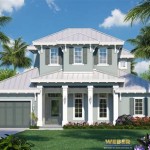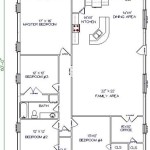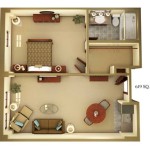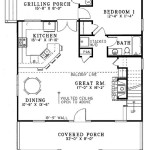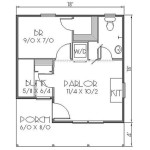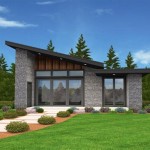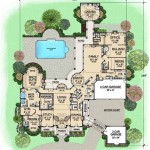Designing Home Plans with Inviting Outdoor Living Spaces
The integration of outdoor living spaces into residential home plans has become increasingly popular. Homeowners are increasingly seeking to expand their living areas beyond the traditional confines of the interior, blurring the lines between the indoors and outdoors. This trend involves carefully considering how outdoor areas can be designed to complement the home's architecture, enhance functionality, and improve the overall quality of life.
Careful planning is required to design home plans with inviting outdoor living spaces, going beyond simply adding a deck or patio. The design must consider factors such as the orientation of the house on the property, available sunlight, prevailing winds, privacy, and the desired functionality of the outdoor space. A well-integrated outdoor living space provides an extension of the home, creating a seamless transition between indoor and outdoor environments, while providing a valuable area for relaxation, entertainment, and recreation.
Several strategies are employed to effectively integrate outdoor spaces into home plans. These range from simple additions like patios and decks to more elaborate setups, including outdoor kitchens, fireplaces, and covered living areas. The key is to ensure that the design reflects the homeowner's lifestyle and takes full advantage of the unique features of the property. The integration of various design elements, such as landscaping, lighting, and furniture, is also crucial in creating a cohesive and inviting outdoor environment.
Maximizing Space and Functionality
One of the primary objectives when designing outdoor living spaces is to maximize the available space and ensure its functionality. This can be achieved through careful planning and the strategic use of design elements. Consideration must be given to the intended use of the space, whether it is for dining, lounging, cooking, or entertaining.
For instance, a well-designed outdoor kitchen can become a focal point for gatherings. The layout should be efficient and incorporate features such as a grill, countertop space, storage, and possibly a sink and refrigerator. The placement of the outdoor kitchen should also consider proximity to the indoor kitchen to facilitate easy transport of food and supplies. Integration with a dining area with seating arrangements can further enhance the usability of the space.
The size and shape of the outdoor space should also influence the design. Smaller spaces may require a more minimalist approach, focusing on essential elements and carefully chosen furniture to avoid overcrowding. Larger spaces offer more flexibility, allowing for the creation of multiple zones for different activities. Regardless of size, the goal is to create a space that is both functional and aesthetically pleasing.
The material selection also significantly impacts the functionality of the outdoor space. Durable and weather-resistant materials are crucial for ensuring the longevity of the structure and minimizing maintenance. Considerations should be given to the climate and local conditions when choosing materials. For example, in areas with high humidity, materials that resist mildew and rot are essential. The choice of materials should contribute to the overall design aesthetic.
Thoughtful arrangement of furniture plays a critical role in creating a functional outdoor living space. Furniture should be comfortable, durable, and scaled appropriately for the space. Consider incorporating a mix of seating options, such as lounge chairs, sofas, and dining sets, to accommodate different activities. The use of outdoor rugs and pillows can help to define different zones and add visual appeal. Storage solutions, such as benches with built-in storage or waterproof cabinets, can help keep the space organized and clutter-free.
Landscape design is integral to maximizing the functionality of an outdoor living space. Plants can provide shade, privacy, and visual interest. Strategic placement of trees, shrubs, and flowers can create a sense of enclosure and define different areas within the space. Consider using native plants that are well-suited to the local climate and require minimal maintenance. The inclusion of a water feature, such as a fountain or pond, can add tranquility and create a focal point. Thoughtful landscaping enhances the usability and enjoyment of the outdoor space.
Seamless Integration with the Interior
A key aspect of designing successful outdoor living spaces is ensuring seamless integration with the interior of the home. This involves creating a smooth transition between the indoor and outdoor environments, both visually and functionally. The goal is to create a cohesive living space that feels like a natural extension of the home.
One of the most effective ways to achieve seamless integration is through the use of large windows and doors. Sliding glass doors or bi-fold doors can open up an entire wall, blurring the lines between the inside and outside. This creates a sense of openness and allows for easy access to the outdoor space. The use of similar flooring materials in both the interior and exterior spaces can further enhance the sense of continuity; for instance, extending hardwood flooring onto a covered patio creates a visual connection.
The design of the outdoor space should complement the architectural style of the home. The use of similar materials, colors, and design elements can create a unified look. For example, if the home has a modern aesthetic, the outdoor space should reflect that with clean lines, minimalist furniture, and contemporary landscaping. If the home has a more traditional style, the outdoor space can incorporate more classic elements, such as brick paving, ornate furniture, and formal gardens.
Extending the interior's functionality into the outdoor space can further enhance integration. For instance, an outdoor dining area can be designed to complement the indoor dining room. The use of similar lighting fixtures and decor can create a cohesive look. An outdoor living room can be designed with comfortable seating, a fireplace, and a television, mirroring the amenities of the indoor living room. By extending the functionality of the interior into the outdoor space, it becomes a more integral part of the home.
Creating a covered outdoor space, such as a porch or pergola, can provide shelter from the elements and further blur the lines between the indoors and outdoors. This allows the outdoor space to be used year-round, regardless of the weather. The use of retractable screens or curtains can provide additional protection from insects and wind.
Lighting plays a crucial role in creating a seamless transition between the interior and exterior. The use of similar lighting fixtures and strategies in both spaces can create a cohesive look. Consider incorporating a mix of ambient, task, and accent lighting to create a layered effect. Path lighting can guide people safely through the outdoor space, while accent lighting can highlight architectural features and landscaping. The use of dimmers allows for adjusting the lighting levels to create the desired mood.
Enhancing Privacy and Comfort
Privacy and comfort are essential considerations when designing outdoor living spaces. Homeowners want to create a retreat where they can relax and unwind without feeling exposed to neighbors or passersby. This involves careful planning and the strategic use of design elements to create a sense of enclosure and seclusion.
One of the most effective ways to enhance privacy is through the use of landscaping. Trees, shrubs, and hedges can create a natural barrier around the perimeter of the outdoor space, blocking views from neighboring properties. The choice of plants should consider the desired level of privacy, the available sunlight, and the local climate. Fast-growing evergreens can provide a dense screen year-round, while deciduous trees can offer shade in the summer and allow sunlight in the winter.
Fences and walls provide another option for enhancing privacy. A solid fence or wall can create a physical barrier that blocks views and reduces noise. The height and style of the fence or wall should be carefully considered to ensure that it complements the architecture of the home and meets local building codes. The use of climbing plants or vines can soften the appearance of a fence or wall and add visual interest.
Screens and curtains can provide a more flexible solution for enhancing privacy. Retractable screens can be used to block views and provide protection from insects. Curtains can be used to create a softer, more intimate atmosphere. The use of outdoor fabrics that are resistant to fading and mildew is essential for ensuring the longevity of the screens and curtains.
Creating a comfortable outdoor environment involves addressing factors such as shade, temperature, and noise. Shade can be provided by trees, awnings, pergolas, or umbrellas. The placement of shade structures should consider the orientation of the sun and the desired level of shade throughout the day. Misters or fans can help to cool the air during hot weather. Sound barriers, such as walls or water features, can help to reduce noise from traffic or neighbors.
Furniture plays a crucial role in creating a comfortable outdoor living space. Cushioned seating, comfortable pillows, and soft rugs can enhance the sense of relaxation. The choice of furniture should consider the intended use of the space and the personal preferences of the homeowner. The use of weather-resistant materials is essential for ensuring the longevity of the furniture.
Outdoor fireplaces and fire pits can add warmth and ambiance to the outdoor space, extending its usability into the cooler months. The placement of the fireplace or fire pit should consider safety and ventilation. The use of comfortable seating around the fireplace or fire pit can create a cozy gathering space. Incorporating features like outdoor heaters can also improve the comfort of the space during colder weather.

Outdoor Living Spaces

12 Floor Plans With Indoor Outdoor Living Houseplans Blog Com

Plan 871012jen Luxury Modern Home With Expansive Outdoor Living Spaces And Pool Concept

Best Outdoor Living Space Ideas For Your Home Frank Betz

12 Floor Plans With Indoor Outdoor Living Houseplans Blog Com

House Plans Outdoor Living Spaces Popular Feature In New Home Designs The Designers

Plan 8292

Plan 75994 Single Story Mediterranean Home With Large Outd

House Plans Outdoor Living Spaces Popular Feature In New Home Designs The Designers

House Plans With Outdoor Living Space And Rear Porch

